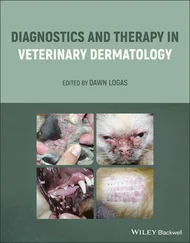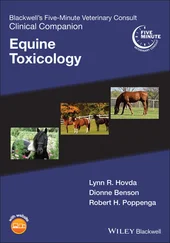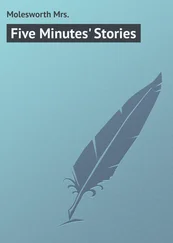DEFINITION/OVERVIEW
A prolapse is the moving or slipping of a body part from its usual position or anatomic relation. In the reptile, a prolapse from the vent may originate in the cloaca, rectum, phallus, oviduct, or bladder.
The underlying causes for prolapse is often unknown.
See Differential Diagnosis for a list of possible etiologies.
There appear to be no specific signalments or predilections noted for the various reptilian prolapses.
Female reptilians may be overrepresented due to occurrences of dystocia.
A prolapse is easy to visualize as abnormal tissue protruding from the cloacal/vent region.
In reptiles housed outdoors and in case of small prolapses, the owners may not notice a problem until days after it has occurred.
A prolapse should be considered as an emergency and evaluated promptly.
The tissue should be kept moist by gently washing the area with water and loosely wrapping in a damp cloth or paper towel until the animal can be evaluated by a veterinarian.
The extruded tissue should be identified to the tissue(s) involved such as cloacal, with/ without bladder, oviduct, proctodeum, colon, phallus, etc.
Once the issues are identified, the clinician may be able to narrow the differential diagnoses (see below) to determine the course of diagnostics and therapeutics.
In cases of nutritional secondary hyperparathyroidism, the muscle tone around the cloacal opening is decreased, leading to potential tissue exposure.
Any generalized physical straining of the patient can lead to tissue exposure through the cloaca, such as dyspnea, obstipation, parasites, infection, etc.
Space‐occupying lesions located in the coelomic cavity, such as uroliths, neoplasia, hepto/renomegaly, eggs, etc., may also cause increase straining and cloacal prolapse.
Several factors of husbandry may lead to one of the clinical conditions listed in the Differential Diagnosis section.
Corrections of the deficient aspects of the husbandry can lead to reversal of some of those listed conditions.
Some cloacal tissue may prolapse during normal oviposition.
Iatrogenic prolapses may occur when owners attempt to manually manipulate ova in suspected cases of dystocia or feces in constipated animals.
 DIAGNOSIS
DIAGNOSIS
DIFFERENTIAL DIAGNOSIS
Parasites
Hypocalcemia
Dehydration
Metabolic disease
Neoplasia
Impaction
Obstruction
Trauma
Coelomic space occupying lesion
Obesity
Bacterial Infection
Intoxication
Radiography and ultrasound may be useful in determining internal abnormalities (e.g., impactions, masses, obstructions).
The small size of some reptiles may lead to reduced imaging detail, which makes interpretation challenging.
Dental radiographs may be a better alternative in smaller species (< 100 g).
A fecal examination should be performed in all cases. This can be directly from the feces, a saline cloacal wash, or direct impression smear of the prolapsed tissue may reveal the presence of parasites such as nematode larvae or eggs.
A CBC and chemistry panel may assist in the determination of underlying physiologic abnormalities.
Protozoal infections affecting the gastrointestinal tract may be diagnosed on histopathology.
Other findings will be consistent with the underlying cause but often no specific cause or pathology can be identified.
 TREATMENT
TREATMENT
APPROPRIATE HEALTH CARE
Treatment often involves direct replacement of the tissue back into normal anatomic position either by manual or
surgical means in combination with correction of the underlying etiology.
The patient should be fully evaluated for general health status and treated accordingly.
The prolapsed tissue should be evaluated for presence of devitalization, which must be surgically or medically addressed prior to prolapse reduction.
In severe oviductal prolapses, discussion with the owner about desired reproductive status should take place with a potential for coeliotomy and ovariosalpingectomy.
In some cases, the internal reproductive structures may be medically or surgically repaired; further reproductive events could result in dystocia.
The prolapse may be reduced in size by coating with a hyperosmotic solution such as 2–5% ophthalmic saline or concentrated sugar solution.
Direct application of dry salt or sugar may be attempted, but the extreme osmolar difference could lead to direct tissue damage and should be closely monitored.
After several minutes of application, the prolapsed tissue should become less edematous and capable of reduction back into the body cavity.
A moistened and lubricated (water soluble) cotton tip applicator or metal probe is used to gently push the tissue back inside the body cavity aligning the lumen.
Surgical options such as resection of the diseased tissue and double‐layer closure can be performed prior to tissue replacement.
In more extensive cases, a coeliotomy/ plastronotomy may be undertaken, with the tissue resection performed within the coelomic cavity where the tissue is in approximate “normal” anatomic position.
Colonic prolapses may require a colopexy where sutures are placed to facilitate the “tacking” of the colon to the dorsolateral body wall.
In cases of reproductive system prolapse (i.e., oviduct), the tissue may be replaced but damage to the suspensory ligaments and internal vasculature may be present.
A purse‐string suture around the cloaca or lateral sutures across the cloacal margin may be placed for 10–14 days to allow for the tissue swelling to resolve in place.
The reptilian patient may need weight and body condition monitoring to determine whether additional caloric supplementation is needed.
CLIENT EDUCATION/HUSBANDRY RECOMMENDATIONS
If surgical correction of the prolapse was undertaken, the client should be directed on postoperative care of any surgical sites, suture, etc.
A detailed log of activity, as well as food intake/defecations, should be maintained and related back to the veterinarian.
If any changes to the husbandry are determined, the owner should correct those prior to the patient returning home, such as changes to temperature and/or humidity, exposure UVB lighting, etc.
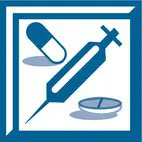 MEDICATIONS
MEDICATIONS
DRUG(S) OF CHOICE
NSAIDs or opioids may be used in management of the inflammation and pain associated with the physical discomfort of the prolapse or surgery.
Depending on the determined etiology, antibiotics or anti‐parasiticides may be indicated.
When replacing the prolapse, extreme care must be taken not to tear or perforate the delicate, inflamed tissue.
Читать дальше
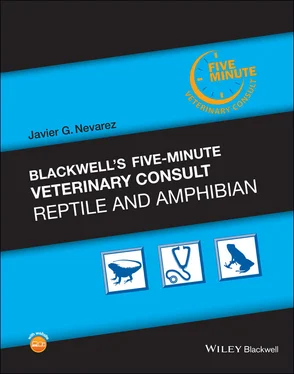
 DIAGNOSIS
DIAGNOSIS TREATMENT
TREATMENT MEDICATIONS
MEDICATIONS

